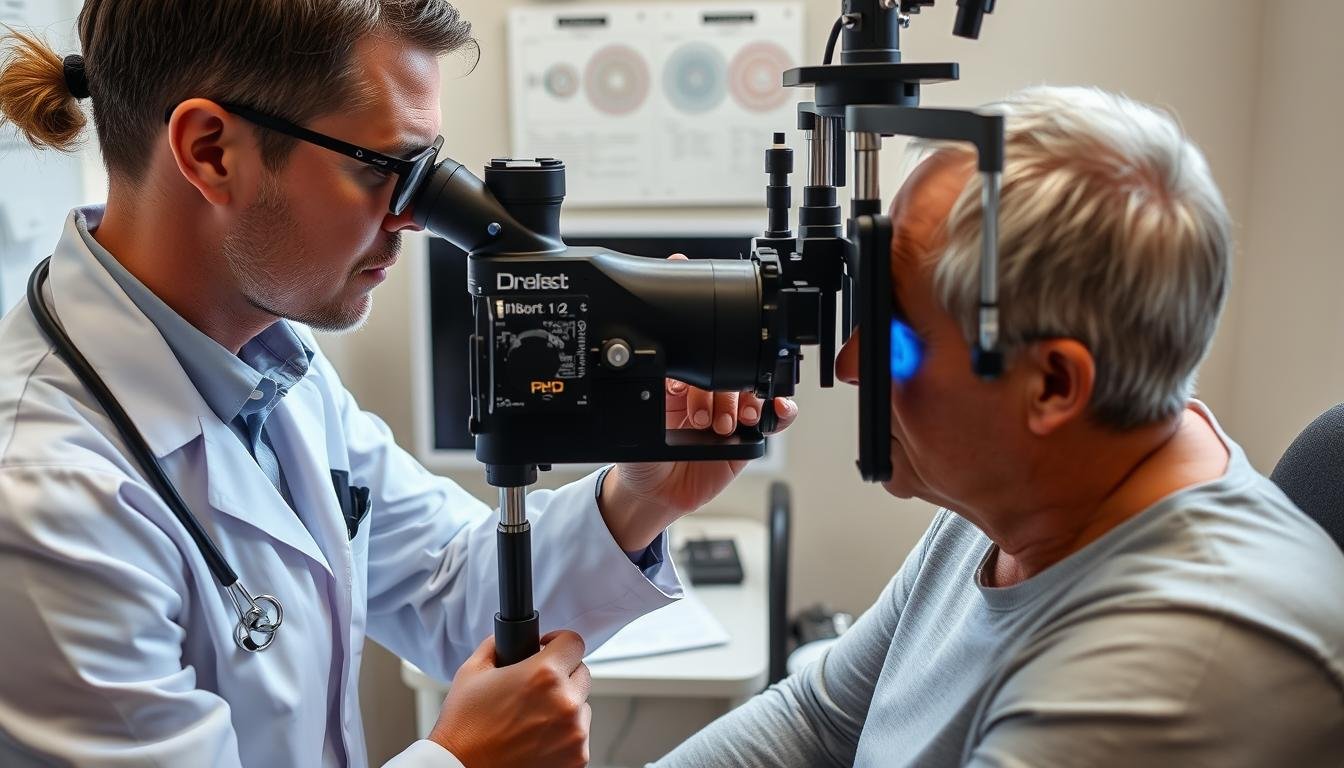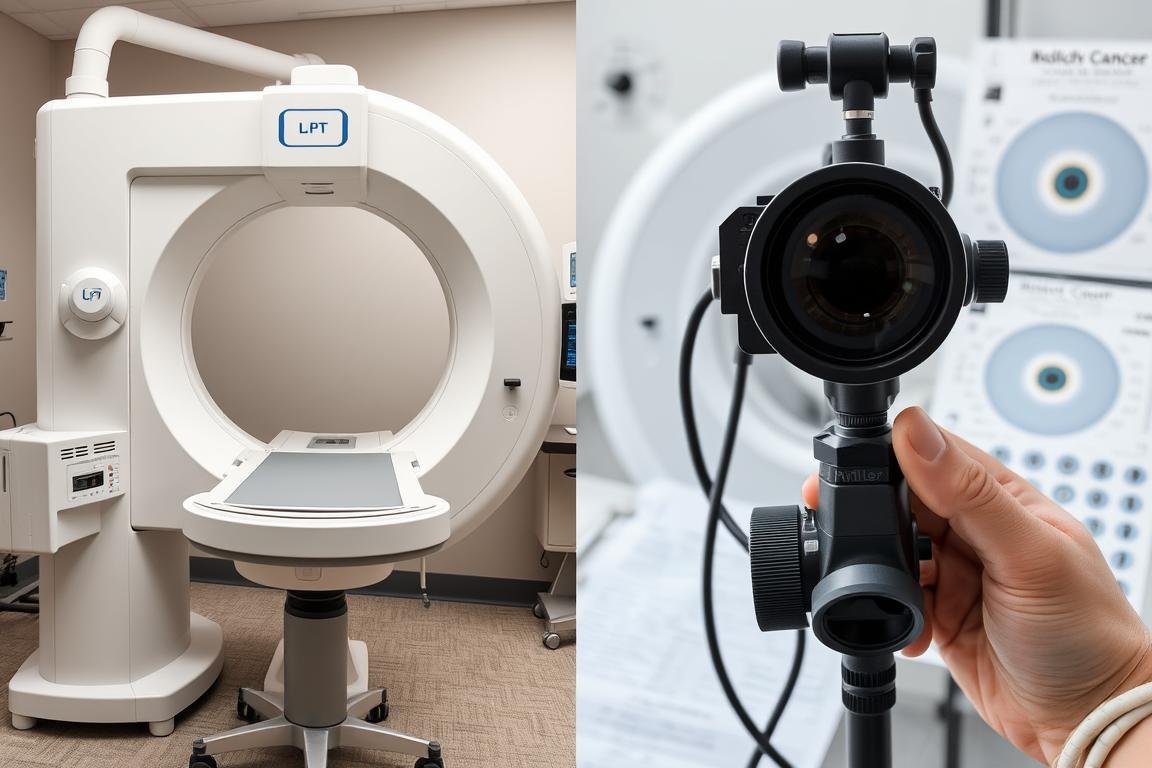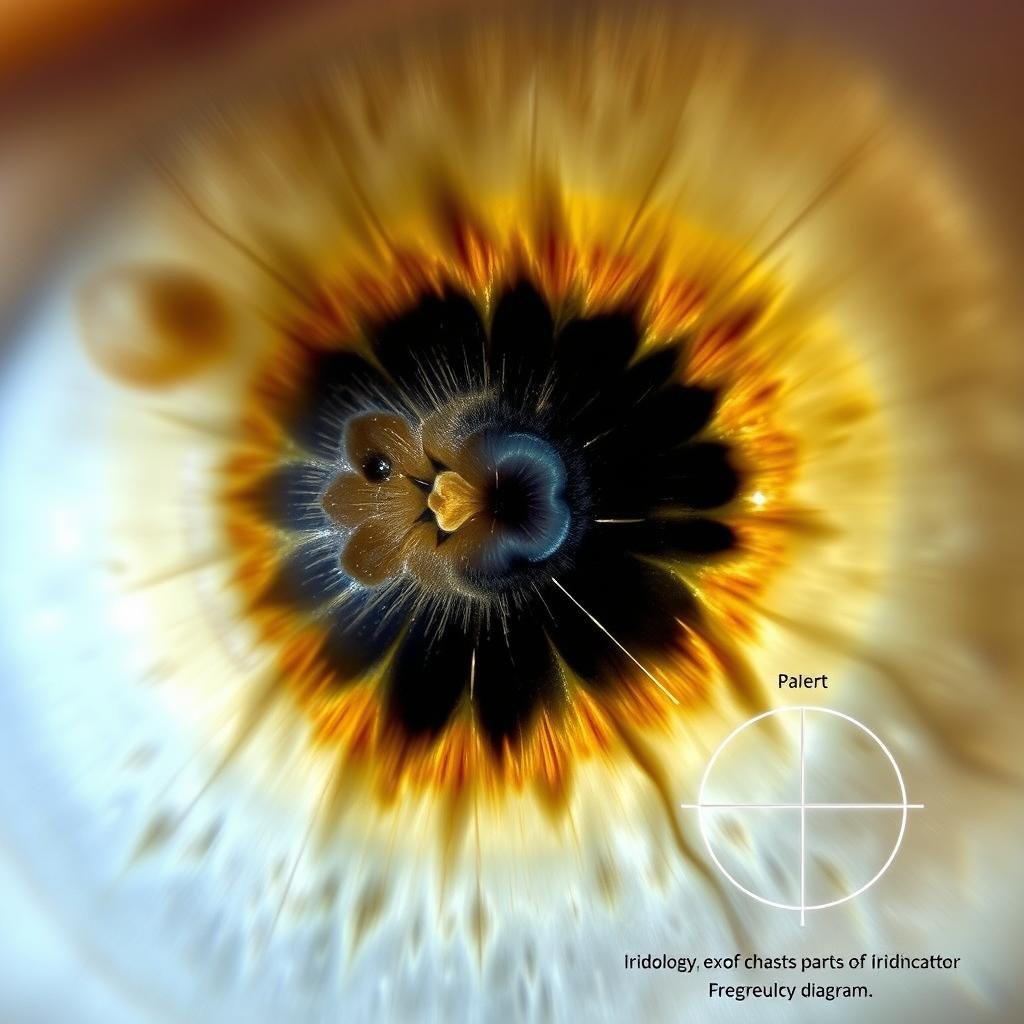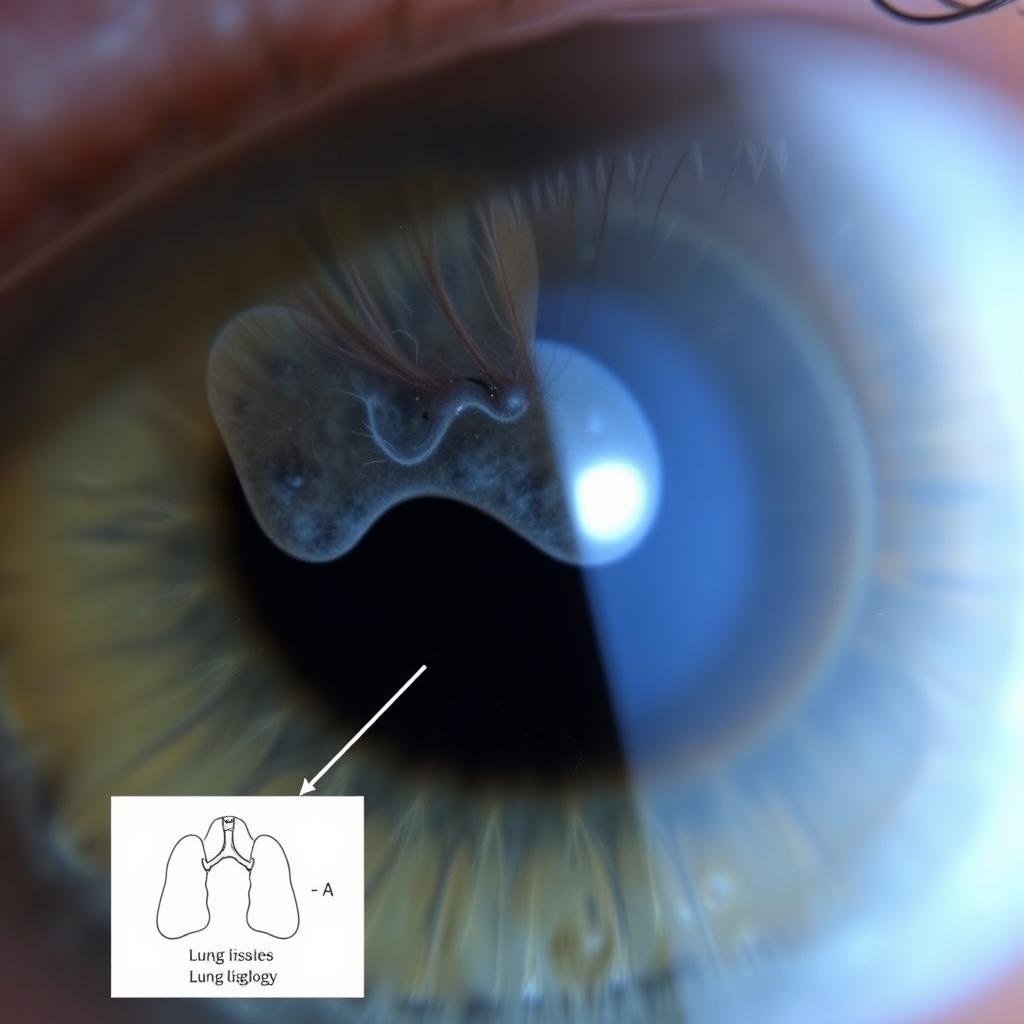Can Iridology Cancer Signs?Iridology is an alternative medicine practice that analyzes patterns, colors, and other characteristics in the iris of the eye to gather information about a person’s health. Practitioners claim these iris signs can reveal various conditions, including cancer susceptibility. But what does the evidence say about iridology cancer signs? This article examines the scientific perspective, common claims, and practical considerations for anyone exploring this alternative approach to health assessment.

An iridologist examining iris patterns using specialized equipment
What Is Iridology and How Does It Work?
Iridology (also known as iridodiagnosis) is based on the theory that the iris serves as a “map” of the body, with different zones corresponding to specific organs and systems. Practitioners believe that changes in iris color, pattern, or structure can indicate health issues in corresponding body parts, including potential cancer development.
The practice dates back to the 19th century, with Hungarian physician Ignaz von Peczely often credited as its founding father. Modern iridologists typically use equipment such as flashlights, magnifying glasses, cameras, or slit-lamp microscopes to examine the iris for tissue changes and specific pigment patterns.
Basic Principles of Iridology
- The iris is divided into approximately 80-90 zones corresponding to different body parts
- Changes in iris appearance allegedly reflect changes in corresponding tissues
- Practitioners use standardized charts to interpret findings
- Both eyes are examined, with the left eye corresponding to the left side of the body and the right eye to the right side
Scientific Evidence: Can Iridology Detect Cancer?
Can Iridology Cancer Signs?The scientific community has conducted several studies to evaluate iridology’s effectiveness in detecting various health conditions, including cancer. These studies provide important insights into the validity of iridology cancer signs.
“Iridology was of no value in diagnosing the cancers investigated in this study.”
— Conclusion from a 2005 prospective case-controlled study published in the Journal of Alternative and Complementary Medicine
Key Research Findings on Iridology and Cancer Detection
| Study |
Methodology |
Results |
Conclusion |
| Münstedt et al. (2005) |
110 subjects (68 with confirmed cancer, 42 controls) examined by experienced iridologist |
Correct diagnosis in only 3 cases (sensitivity: 0.04) |
No value in diagnosing breast, ovary, uterus, prostate, or colorectal cancers |
| Herber et al. (2008) |
29 patients with colorectal cancer matched with 29 healthy controls |
Cancer detected in only 50-53% of cases |
No better than random chance |
| Simon et al. (1979) |
Three iridologists examined photos of 143 patients (48 with kidney disease) |
Could not correctly identify patients with kidney disease |
Failed to establish diagnostic validity |
A comprehensive review by Ernst (2000) published in the Archives of Ophthalmology examined multiple controlled studies with masked evaluation of iridology’s diagnostic validity. The review concluded that none of the studies found any benefit from iridology and that it could potentially be harmful if it led to missed or delayed diagnoses.

Comparison of conventional cancer screening methods and iridology examination
Get Our Free Guide to Cancer Screening Options
Download our comprehensive guide that explains both conventional and complementary approaches to cancer detection and prevention.
Download Free Guide
Common “Cancer Signs” in Iridology
Despite the lack of scientific validation, iridologists claim to identify specific iris markings that may indicate cancer risk or development. These purported iridology cancer signs include various patterns and discolorations that practitioners interpret using standardized charts.

Close-up of iris showing markings that some iridologists interpret as health indicators
Claimed Iris Markings Associated with Cancer Risk
Structural Signs
- Lacunae – Dark, enclosed spots or crypts that may indicate tissue damage in corresponding organs
- Radii Solaris – Spoke-like lines radiating from the pupil, claimed to indicate toxicity or degenerative conditions
- Lymphatic Rosary – White dots arranged in circular patterns, supposedly indicating lymphatic system issues
- Contraction Rings – Circular lines around the iris, interpreted as signs of tension or stress in body systems
Color and Pigmentation Signs
- Dark Spots – Particularly in organ-specific zones, claimed to indicate potential malignancy
- Yellow Discoloration – Interpreted as toxic accumulation in specific organs
- White Markings – Claimed to indicate inflammation or immune system weakness
- Color Changes – Progressive darkening in specific zones interpreted as worsening conditions
Important Note: These claimed “cancer signs” in iridology have not been validated by scientific research. The stability of iris structures throughout life contradicts the fundamental premise that the iris changes in response to health conditions.
Organ-Specific Cancer Signs According to Iridology
Iridologists claim that specific areas of the iris correspond to particular organs, and changes in these areas may indicate cancer risk in those organs:
Breast Cancer
Located in the left iris at approximately 7:30-8:00 position for women. Claimed signs include dark spots, lacunae, or radii solaris in this zone.
Lung Cancer
Found in both irises at the 2:00-3:00 position (right lung) and 9:00-10:00 position (left lung). Claimed signs include darkening, white marks, or structural changes.
Colon Cancer
Represented by the outer rim of the iris. Claimed signs include dark spots, crypts, or structural abnormalities along this peripheral zone.
Controversies and Limitations of Iridology for Cancer Detection

Healthcare professional discussing screening options with a patient
Despite its popularity in some alternative medicine circles, iridology faces significant scientific and practical challenges when used for cancer detection. Understanding these limitations is crucial for anyone considering this approach.
Proponents Claim
- Non-invasive assessment method
- Potential for early detection before symptoms appear
- Holistic approach considering the whole body
- May encourage preventive health measures
Scientific Concerns
- Lack of biological mechanism explaining how organ conditions would affect iris appearance
- Iris structure remains stable throughout life (basis for biometric identification)
- Poor performance in controlled clinical studies
- Risk of false positives/negatives leading to inappropriate interventions or false reassurance
Key Risks of Relying on Iridology for Cancer Detection
Expert Perspective: “The danger of iridology lies not in the practice itself, which is non-invasive, but in the potential for misdiagnosis, delayed proper medical care, or false reassurance that could postpone necessary treatment.” — Dr. Stephen Barrett, Medical Watchdog and Consumer Advocate
Delayed Diagnosis
Perhaps the most serious risk is delayed diagnosis of actual cancer. If an individual relies on iridology instead of evidence-based screening methods, they may miss the opportunity for early detection and treatment when cancer is most treatable.
False Positives
Iridology may identify “cancer signs” in perfectly healthy individuals, leading to unnecessary anxiety, additional testing, and potentially invasive procedures that carry their own risks.
False Negatives
Conversely, iridology might fail to detect actual cancer, giving patients a false sense of security that prevents them from seeking proper medical evaluation.
Financial Costs
Iridology sessions, recommended supplements, and follow-up appointments can become expensive, especially when they don’t provide scientifically validated health information.

Technological comparison: conventional cancer screening equipment vs. iridology tools
Practical Advice: Balancing Interest in Iridology with Evidence-Based Care
For those interested in iridology while ensuring they receive appropriate cancer screening and care, a balanced approach is essential. Here’s practical guidance for navigating both conventional and complementary health approaches.

Collaborative approach to healthcare decisions involving multiple perspectives
Recommended Approach to Cancer Screening
Primary Screening
- Follow evidence-based screening guidelines appropriate for your age, gender, and risk factors
- Maintain regular check-ups with primary care physician
- Complete recommended screenings like mammograms, colonoscopies, and Pap tests on schedule
- Report any unusual symptoms promptly to medical professionals
Complementary Approaches
- Consider complementary approaches as additions to, not replacements for, conventional care
- If interested in iridology, view it as a potential wellness tool rather than diagnostic method
- Discuss all complementary approaches with your primary healthcare provider
- Maintain healthy skepticism about definitive health claims not supported by evidence
Informed Decision-Making
- Research the evidence behind any health approach you’re considering
- Understand the qualifications and limitations of various practitioners
- Consider getting second opinions for significant health decisions
- Prioritize approaches with stronger evidence bases for serious conditions like cancer
Questions to Ask an Iridologist
If you decide to consult an iridologist despite the scientific limitations, consider asking these questions:
- What is your training and certification?
- How do you view the relationship between iridology and conventional medicine?
- Will you encourage me to continue with conventional cancer screenings?
- What specific health claims do you make about iridology’s ability to detect cancer?
- How do you respond to the scientific studies that have not supported iridology’s diagnostic validity?
Speak With a Healthcare Professional
Our network includes practitioners who understand both conventional and complementary approaches to health. Schedule a consultation to discuss your personalized cancer prevention strategy.
Request Consultation
Expert Perspectives on Iridology and Cancer Detection
To provide a balanced view, we’ve gathered insights from various healthcare professionals regarding the use of iridology for cancer detection and its place in the broader healthcare landscape.

Medical experts discussing various approaches to early disease detection
“While we should maintain an open mind about complementary approaches, cancer screening and diagnosis should rely on methods with demonstrated sensitivity and specificity. The evidence does not support iridology as a reliable cancer detection tool, and patients should be cautious about delaying conventional screening based on iris readings.”
— Dr. Rebecca Johnson, MD, Oncologist
“The iris does contain valuable health information—it can reveal signs of inflammation, genetic predispositions, and certain systemic conditions. However, the specific claim that it can reliably detect cancer has not been substantiated by rigorous research. As ophthalmologists, we recognize certain eye changes that correlate with health conditions, but these are different from the claims made in traditional iridology.”
— Dr. Michael Chen, MD, Ophthalmologist
“In integrative medicine, we look for approaches that complement evidence-based care. While some patients report value in the holistic perspective iridology provides, I always emphasize that it should never replace proven screening methods for cancer detection. The most responsible approach is to combine the best of conventional medicine with complementary approaches that have stronger evidence bases.”
— Dr. Sarah Williams, MD, Integrative Medicine Specialist
Can changes in the iris actually indicate cancer development?
Scientific evidence does not support the claim that specific changes in the iris reliably indicate cancer. The fundamental premise of iridology—that the iris changes in response to health conditions in corresponding body parts—contradicts what we know about iris stability throughout life. While certain systemic conditions can affect eye appearance (such as yellowing in jaundice), these are different from the specific mapping claims made in traditional iridology.
If iridology isn’t scientifically validated, why do some people report benefits?
Several factors may contribute to positive reports about iridology despite the lack of scientific validation:
- The consultation process often involves detailed health discussions that may identify real issues
- Lifestyle recommendations that accompany iridology (improved diet, stress reduction) may have genuine health benefits
- Psychological factors like the placebo effect and confirmation bias can influence perceived outcomes
- Natural resolution of self-limiting conditions may coincidentally occur after iridology consultation
Conclusion: Making Informed Decisions About Iridology and Cancer Detection

Making informed healthcare decisions requires evaluating multiple sources of information
Can Iridology Cancer Signs?The question “Can iridology detect cancer?” has been examined from multiple perspectives throughout this article. While iridology offers an intriguing approach to health assessment, the scientific evidence does not support its use as a reliable method for cancer detection or diagnosis.
The most prudent approach for anyone concerned about cancer is to follow established screening guidelines appropriate for their age, gender, and risk factors, while maintaining open communication with healthcare providers about any complementary approaches they wish to explore.
If you choose to incorporate iridology into your wellness routine, consider it as a complementary tool rather than a primary diagnostic method, especially for serious conditions like cancer. The eyes may indeed offer fascinating insights into overall health, but the specific claims about iridology cancer signs require much stronger scientific validation before they can be relied upon for critical health decisions.
Download Our Comprehensive Guide to Cancer Prevention
Get evidence-based strategies for reducing cancer risk, understanding screening options, and evaluating complementary approaches to health maintenance.
Get Your Free Guide Now
























